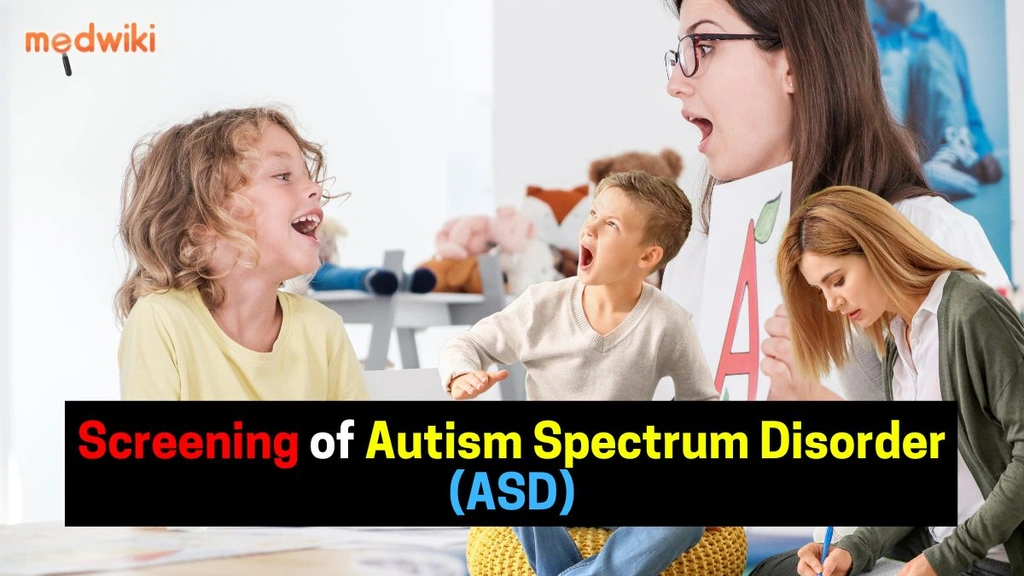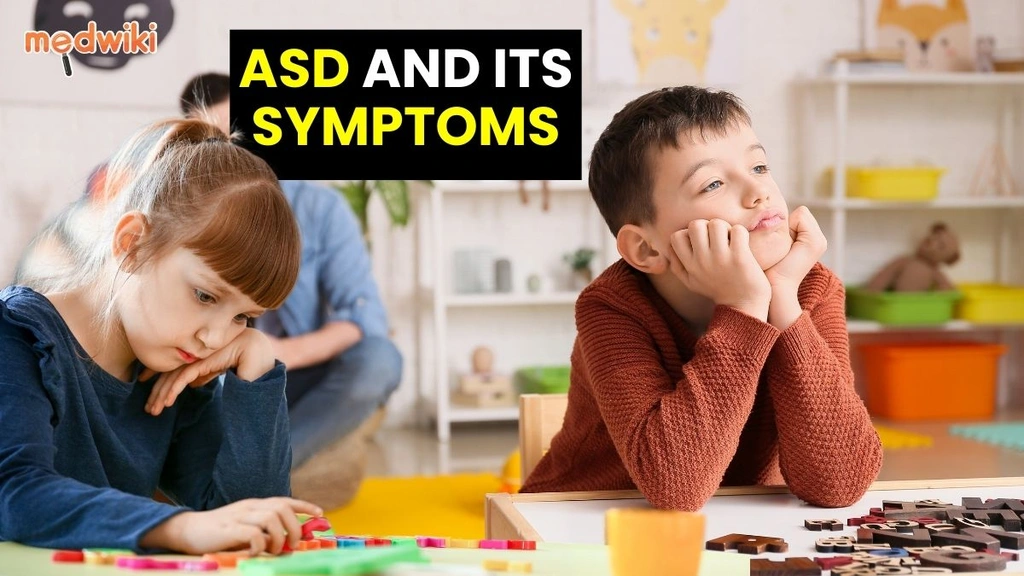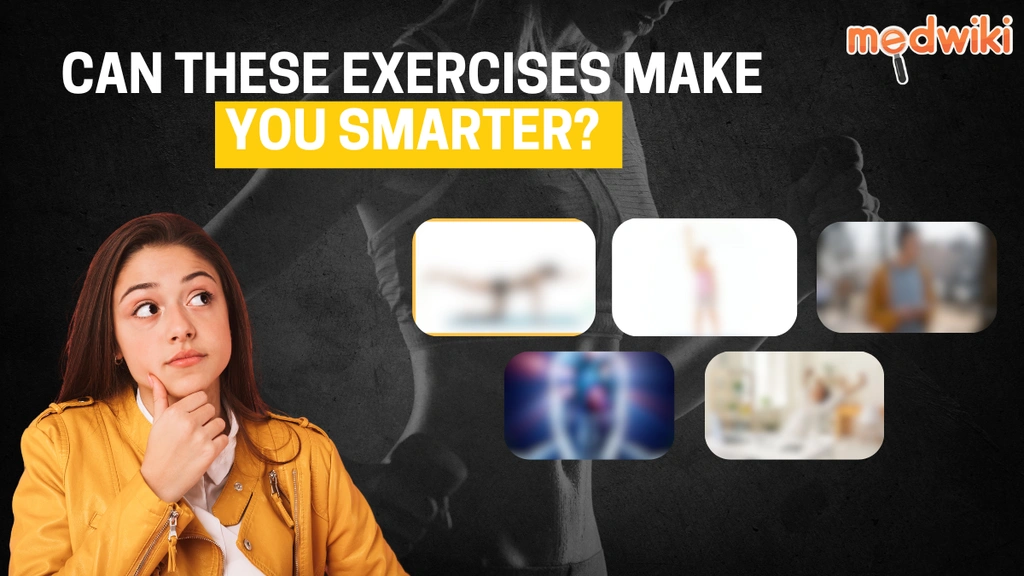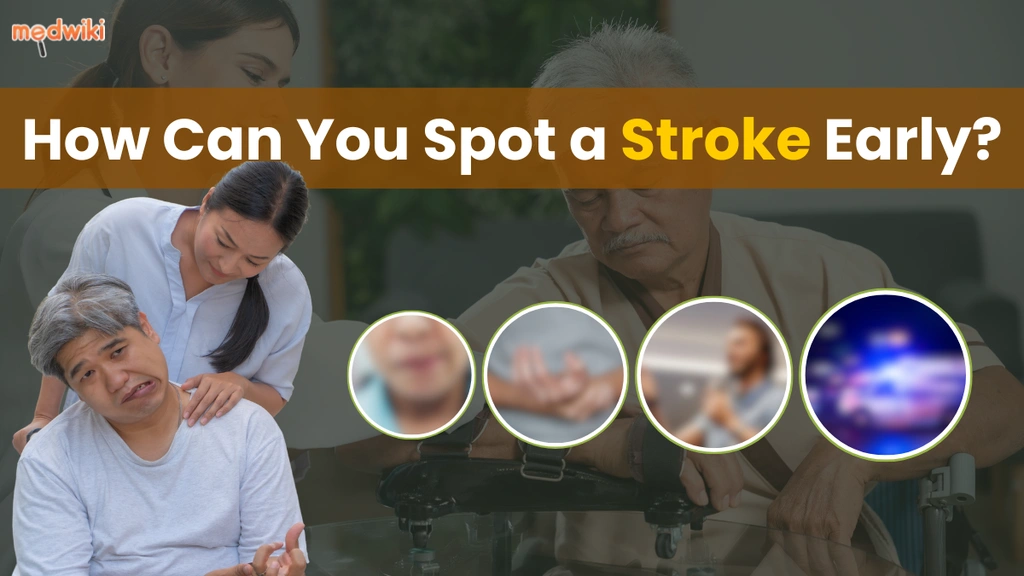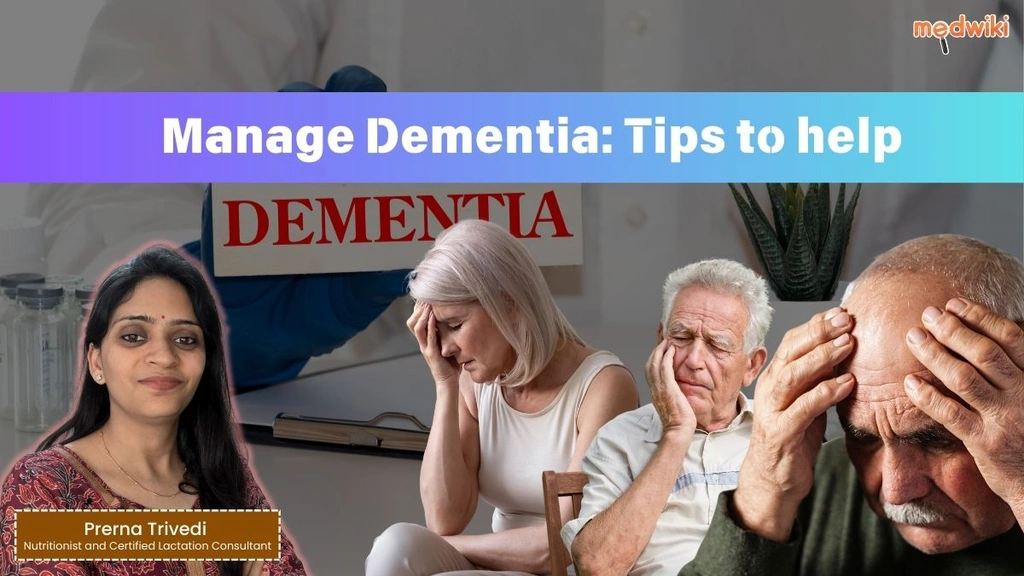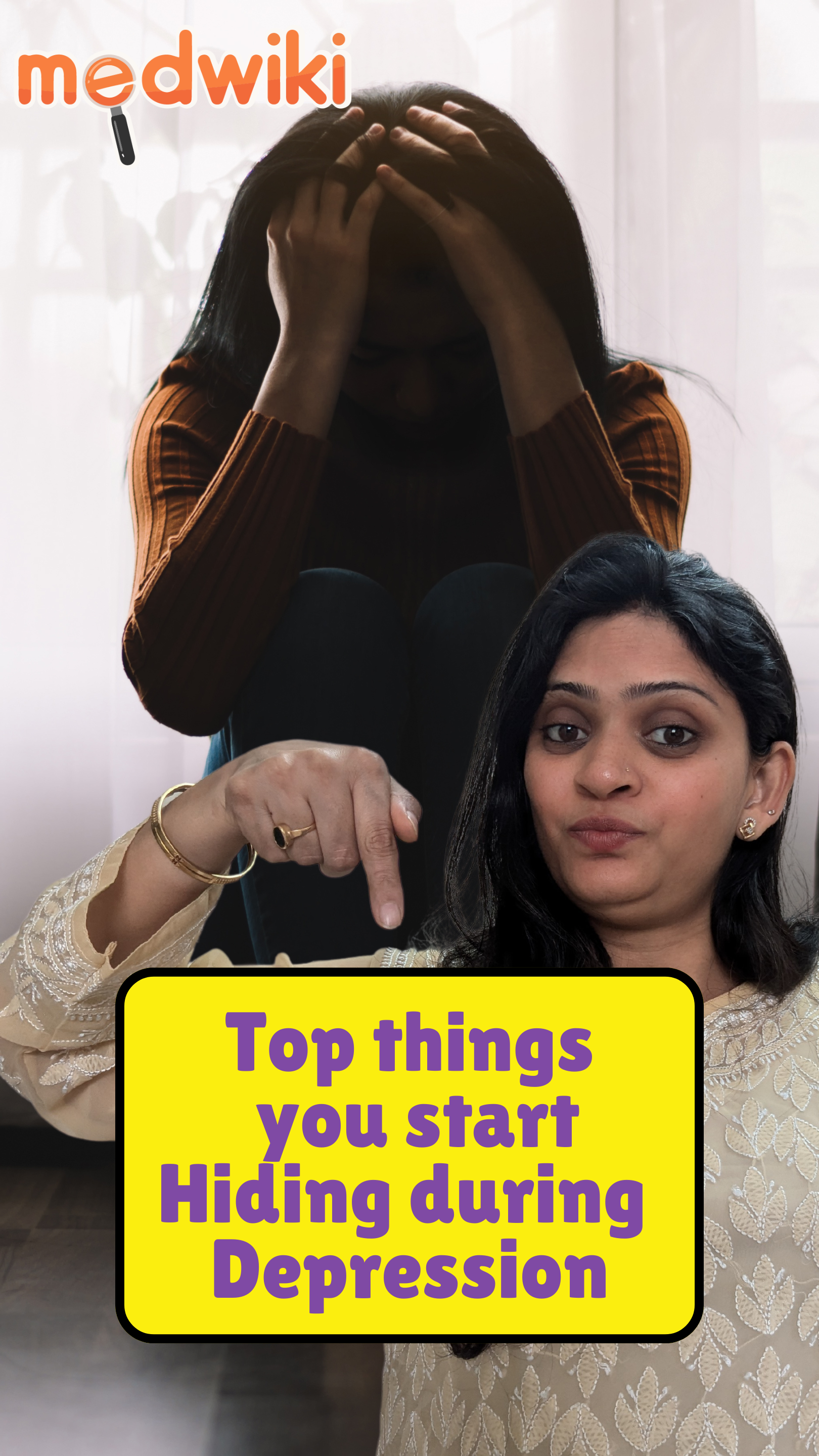ASD screening is mainly used for young children to find out if a child has any early signs of ASD. Though screening is done for adults as well.In case of children, doctors do a routine checkup for screening before the age of 2 years. Older children and adults may also be screened if they have any symptoms of ASD but they have never been diagnosed with the disorder.There are ways to screen out ASD but screening cannot diagnose ASD. If a screening shows that a child may have the disorder, more testing will be needed to diagnose ASD.Need more clarity about ASD? Our trusted health assistant is here to help you on Ask Medwiki.Screening of ASD in children:In children the screening is usually done by a pediatrician or a nurse.Questionnaires: The parents are requested to complete one or more questionnaires asking about their child's development and behavior, including speech, movement, thinking, and emotions. ASD often runs in families, so you may also be asked about your family health history.Observation. The doctor/ nurse observes how the child plays and interacts. For example, the provider will check if your child responds to your laugh or looks at a person who tries to get their attention. Not responding may be a sign of ASD.Interactive screening tests. These tests are play activities, such as playing make-believe with dolls or other toys. These tests are designed to check your child's communication skills, social behavior, and other abilities.Screening of ASD in Adults:In order to screen for ASD, the psychologist or psychiatrist may:Talk about the challenges one faces in their day-to-day lifeAsk to complete a questionnaire about the symptomsAsk the concerned person to talk with family members who remember what he/she was like as a young childDo screening tests for depression, ADHD, and/or anxiety, which are common in people who have ASD.Remember, there are no special preparations needed for this screening and there is no risk of having autism spectrum disorder screening.It was always better to consult an expert for screening of ASD. But if you wish to have some idea beforehand, you can use the Medwiki Mental Health calculator (link) to know your condition.Source:- https://medlineplus.gov/lab-tests/autism-spectrum-disorder-asd-screening/
Autism Spectrum Disorder (ASD) is a condition that affects how people's brains develop. It starts in early childhood and lasts throughout life. ASD affects how people interact with others, communicate, and learn.The word "spectrum" means that ASD affects people in different ways. Some people with ASD might find it hard to talk to others or make eye contact. They might have specific interests and do things repeatedly. For example, they might spend a lot of time organizing things or repeating the same words. Sometimes, it might seem like they're in their own world.Some common symptoms of ASD include:Difficulty with social interaction and communication like:Avoiding eye contactDoes not respond to name by 9 months of ageDoes not show facial expressions such as happy, sad, angry, and surprised by 9 months of ageUses few or no gestures by 12 months of age (for example, does not wave goodbye)Does not point to show you something interesting by 18 months of ageDoes not pretend to be something else, like a teacher or superhero, during play by 48 months (4 years) of ageDoes not sing, dance, or act for you by 60 months (5 years) of age2. Restricted or repetitive behaviors or interests, like:Lining up toys or other objects and gets upset when order is changedRepeats words or phrases over and over (called echolalia)Plays with toys the same way every timeGets upset by minor changesFlaps hands, rocks body, or spins self in circlesHas unusual reactions to the way things sound, smell, taste, look, or feel3. Other characteristics, like:Delayed language skillsDelayed movement skillsDelayed cognitive or learning skillsHyperactive, impulsive, and/or inattentive behaviorEpilepsy or seizure disorderUnusual eating and sleeping habitsGastrointestinal issues (for example, constipation)Unusual mood or emotional reactionsAnxiety, stress, or excessive worryLack of fear or more fear than expectedIt is crucial to understand these potential symptoms for early identification, appropriate support, and promoting the well-being of individuals with ASD. To know all about diagnosis and treatment of ASD, watch our next video.Source:- https://www.cdc.gov/autism/signs-symptoms/
Vertigo is a condition where you may feel like everything around you is spinning, even though you are stable. In common terms, we call it "feeling dizzy." It is not a disease in itself, but it could be a symptom of another problem.Unsure about something you read about Vertigo ? Ask your health question on Ask Medwiki a trusted source for reliable information.Here are some easy remedies to manage vertigo at homeOne of the main causes of vertigo is dehydration. Therefore, make sure to drink plenty of water throughout the day. Keep a water bottle with you so that you don’t forget to drink. You can also include water-rich foods in your diet, such as cucumber, tomatoes, watermelon, oranges, strawberries, and coconut water.Avoid junk foods like chips, chocolates, cookies, and soda. These foods increase inflammation in the body and impair blood circulation, which can worsen vertigo.Vitamin D-rich foods also improve blood circulation, so include Vitamin D-rich foods like mushrooms, tuna, salmon, broccoli, and cheese in your diet, as they can help manage vertigo.Ginger also helps in managing vertigo. The compounds gingerol and shogaol in ginger improve blood circulation and help balance the nervous system. You can consume raw ginger or make ginger tea to benefit from it.Simple exercises, like walking and yoga, provide relief from vertigo because they help improve body balance and blood circulation. Poses like Tree Pose, Corpse Pose, Child Pose, and Thunderbolt Pose help reduce vertigo. They calm the mind and strengthen the nerves.Take care of yourself, and don't hesitate to seek help from a doctor if needed.Source:-1. https://www.webmd.com/brain/vertigo-symptoms-causes-treatment2. https://newsinhealth.nih.gov/2021/11/dealing-dizziness3. https://www.ncbi.nlm.nih.gov/books/NBK482356/4. https://pmc.ncbi.nlm.nih.gov/articles/PMC2696792/5. https://www.webmd.com/brain/remedies-vertigo
ADHD (Attention Deficit Hyperactivity Disorder) is a condition that makes it hard for some children to focus, sit still, or control their impulses. If you’re wondering if your child might have ADHD, here are some signs to look out for:ADHD in Children: Signs and Symptoms to Look Out For:Trouble focusing: If your child has a hard time paying attention at school or at home, it could be a sign of ADHD. They may forget things easily, daydream often, and have trouble finishing tasks.Impulsive behavior: ADHD (Attention deficit hyperactivity disorder) can make it hard for kids to think before they act. They might interrupt others, shout out answers before the question is finished, or have trouble waiting their turn.Easily distracted: Kids with ADHD can get distracted by anything around them, making it hard to focus on homework or conversations.Hard to follow directions: They may forget steps in tasks or make mistakes because they didn’t follow the instructions properly.Risk-taking: Some kids with ADHD do things without thinking about the danger. They may not worry about the consequences of their actions.Tantrums and acting out: If your child has frequent tantrums or behaves in a disruptive way, it might be because of ADHD. Some children may also have a related condition like Oppositional Defiant Disorder.Learning difficulties: Kids with ADHD may have other problems like dyslexia or delays in speech. They might also find it hard to make friends or connect with others.Anxiety or depression: Many children with ADHD also feel anxious or sad, but these feelings are sometimes missed because the focus is on their behavior.Family history: ADHD can run in families. If other family members have it, your child might have a higher chance of having it too.ADHD (Attention deficit hyperactivity disorder) can make school and friendships more difficult. But with the right help, like special strategies at home and school, kids with ADHD can do really well. If you think your child may have ADHD, talking to a doctor can help you get the right support.Source:- 1. https://www.nimh.nih.gov/health/topics/attention-deficit-hyperactivity-disorder-adhd 2. https://www.nimh.nih.gov/health/publications/attention-deficit-hyperactivity-disorder-what-you-need-to-know
Your brain is amazing, but just like any other part of your body, it needs exercise to stay sharp and focused. Regular movement can enhance your memory, concentration, and overall brain health.Top 5 exercises that can help you improve brain function and make you smarterSuper Brain YogaSuper Brain Yoga is an easy and powerful exercise for your brain. It involves massaging your earlobe while squatting up and down. Start by gently massaging the earlobe of one ear with the opposite hand. Then squat down, inhale, and come back up, exhaling. Repeat this for a few minutes. This simple move helps improve focus and concentration.Cross CrawlsCross Crawls are fantastic for enhancing communication between your brain’s left and right sides. Simply raise one knee and touch it with the opposite hand or elbow, then alternate sides. This exercise helps with coordination and memory retention by crossing the midline of your body, which activates both hemispheres of your brain.Walking or Rhythmic ExerciseWhile you walk or engage in rhythmic exercise like cycling or swimming, your brain releases neurochemicals that improve memory. Research shows that moving your body while listening to podcasts or audiobooks can actually help you understand and retain information better. So, next time you want to learn something new, take a walk while listening!Mindfulness for Brain HealthMindfulness isn’t just for relaxation. It also boosts brain power! Try doing simple tasks, like brushing your teeth with your opposite hand. This challenges your brain and stimulates different parts of it. It’s like giving your brain a mini workout each day.Hand and Foot CoordinationTry exercises where you move your hands and feet in different patterns. For example, tap your hands and feet alternately, or try moving one hand faster than the other. This enhances coordination and mental flexibility, which are crucial for quick thinking.Remember, as your body moves, your brain grooves! The more you practice, the better your brain will perform. Keep moving and keep learning!Source:- 1. https://pmc.ncbi.nlm.nih.gov/articles/PMC2680508/ 2. https://pmc.ncbi.nlm.nih.gov/articles/PMC3951958/
A stroke is a medical emergency, and recognizing its signs early can save a life. The quicker you spot the symptoms, the faster you can act, which can help reduce brain damage.Let’s find out how to identify the signs of a stroke so that you can react quickly and get help.Signs of a StrokeNumbness or Weakness: If someone suddenly feels numb or weak, especially on one side of the body (like their face, arm, or leg), it could be a sign of a stroke. This is often noticeable when the weakness affects just one side.Confusion: Another sign is confusion. If someone has trouble speaking or understanding what others are saying, this might be a symptom of a stroke. Their speech may be slurred, or they might have trouble forming words.Trouble Seeing: A stroke can also cause vision problems. If a person has trouble seeing out of one or both eyes, it could be another warning sign.Balance Issues: Sudden difficulty walking or feeling dizzy might indicate a stroke. If someone is having trouble with their balance or coordination, it’s important to take it seriously.Sudden Severe Headache: A severe headache that comes on suddenly, without any clear cause, is another symptom. If the headache feels different from usual, it’s important to check for other signs of a stroke.What to Do If You Suspect a Stroke?Time is critical when someone is having a stroke. If you notice any of the above signs, follow the FAST method to check further:F (Face): Ask the person to smile. If one side of their face droops, it could be a stroke.A (Arms): Ask the person to raise both arms. If one arm drifts downward, it’s a sign.S (Speech): Ask the person to repeat a short phrase. If their speech is slurred or hard to understand, it’s concerning.T (Time): If any of these signs are present, call an ambulance immediately. Time matters!Remember, getting medical help as quickly as possible can make a big difference. Don’t wait to see if the symptoms go away—call for help right away.Source:-1. https://www.niams.nih.gov/health-topics/calcium-and-vitamin-d-important-bone-health 2. https://ods.od.nih.gov/factsheets/calcium-HealthProfessional/
How to Calm a Panic AttackAccording to the World Health Organization (WHO), panic disorder is the most common mental health condition globally. It has affected over 300 million people in the world.It is estimated that around 2-3% of the global population experience panic disorder every year.Panic attacks can leave one breathless and terrified.Looking for reliable health guidance on Panic Attacks ? Ask your doubts now on Ask Medwiki.What is a Panic Attack?A sudden feeling of intense fear or discomfort is called Panic Attack. This phase is often accompanied by certain physical and emotional symptoms like:Rapid heartbeatSweatingShortness of breathChest painNauseaDizzinessFearAnxietyBut remember, there are some effective ways to manage these panic attacks.Techniques to manage Panic Attacks:Deep Breathing:4-7-8 Breathing: Panic attacks can cause rapid breathing and chest tightness, making the breaths shallow. Therefore, deep breathing techniques help at this time. Therefore, Inhale slowly for 4 seconds, hold for 7 seconds, and exhale slowly for 8 seconds and repeat as needed.Grounding Techniques:5-4-3-2-1 Method: Identify 5 things you can see, 4 things you can touch, 3 things you can hear, 2 things you can smell, and 1 thing you can taste. This technique is a type of mindfulness which helps direct the person’s focus away from stress.Positive Affirmations:Repeat calming phrases like "I am safe," "This feeling will pass," or "I am strong." These positive affirmations can help counter negative thoughts. When you focus on saying a short, calming phrase over and over, your body can start to relax. This can help slow down your breathing and make your muscles feel less tense.Reach to your Calm Place:Close your eyes and find yourself in a peaceful, serene place. Imagine the sights, sounds, and feelings in this calming environment. Calmer environments have fewer distractions which can help to lessen the intensity of panic symptoms.Seeking SupportConnect with Loved Ones: Share your feelings with someone you trust.Professional Help: Consider seeking therapy, such as cognitive-behavioral therapy (CBT), to learn effective coping strategies. In some cases, medication may also be helpful.If people can learn to control or avoid things that trigger their panic attacks, they might have fewer attacks and the attacks might not be as bad.Remember, you're not alone. With the right tools and support, you can manage panic attacks and live a fulfilling life.Source:- https://www.medicalnewstoday.com/articles/321510
Living with dementia can be challenging, but there are ways to help individuals enjoy their daily lives and maintain independence.3 Tips to Help People with Dementia:Staying Healthy and Active:Exercise helps improve both physical and mental health—try simple activities like walking or yoga.Eating balanced meals, rich in fruits, vegetables, and proteins, supports brain health.Avoid smoking and alcohol, as they can worsen symptoms.Regular health check-ups help track any changes and ensure proper care.Keeping the Mind Engaged:Using lists or calendars helps remember important tasks and reduces stress.Hobbies like painting or gardening help keep the mind active and boost mood.Puzzles, games, or learning something new can slow down cognitive decline.Staying socially connected through family, friends, or groups provides emotional comfort and support.Planning Ahead:Designate trusted people to help with decision-making when needed.Write down your preferences for future care, ensuring your wishes are known.Carry ID and emergency contact information to stay safe when going out.Joining support groups offers emotional strength and shared experiences.Even though dementia has no cure, these tips can help manage symptoms and improve quality of life, promoting independence and well-being.Source:-1.https://www.who.int/news-room/fact-sheets/detail/dementia
Shorts
Overcome Depression: When to talk to a doctor!
Mrs. Prerna Trivedi
Nutritionist
What is Dyslexia, How dangerous it is, How to Diagnose and Manage Dyslexia!
Mrs. Prerna Trivedi
Nutritionist
Top things you start hiding during depression
Mrs. Prerna Trivedi
Nutritionist
Is your child depressed?
Mrs. Prerna Trivedi
Nutritionist


